EXPERT INSIGHT
Shaping the Future of Orthotic Design: A Different Approach to Research
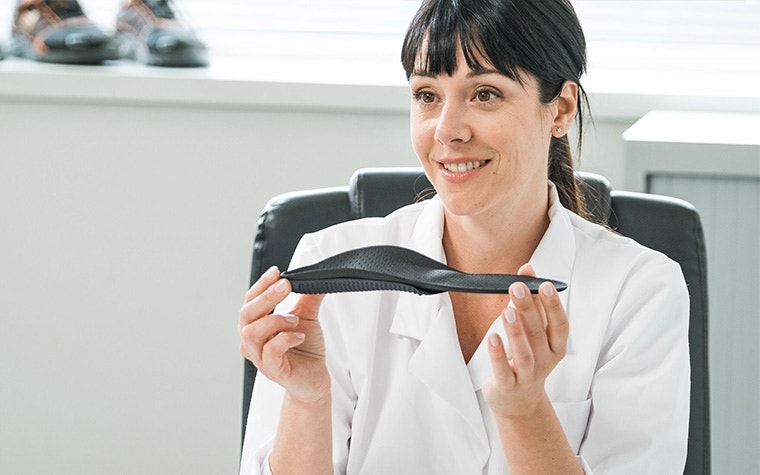
At Materialise Motion, we employ a diverse range of research approaches to advance our understanding of biomechanics and develop innovative solutions for clinicians and patients. We work side by side with researchers and universities around the world and support scientific research, including funding a chair at Belgium’s KU Leuven. Together, we’re shaping the future of foot and ankle care.
Since we first introduced our footscan software to the market, it has been featured in more than 400 scientific studies, articles, research papers, and books — all of which have helped us expand our knowledge of biomechanics and improve our algorithm.
This collaborative relationship with research partners is crucial in delivering the best solutions to clinicians and patients alike. We can guide research toward real-world applications, ensuring that academic efforts align with industry needs. By combining experimental validation with virtual modeling, we ensure accuracy, efficiency, and real-world applicability in our motion analysis and orthopaedic solutions.
From mechanical testing to the optimal insole design
Today, the path to optimizing our insole’s design is split into four stages, running in a continuous loop:
- Design
- Manufacturing
- Assessment
- Adaptation
During this process, we conduct high-cycle mechanical tests that mimic the number of loading cycles an insole could expect to go through over several years. The data is incredibly valuable — it helps us ensure phits offer the durability clinicians and patients demand.
We manage this mechanical testing by collaborating with Thomas More, the largest university of applied sciences in Flanders. Our core focus is on enhancing the forefoot structure of our insoles, an area that endures high pressure. However, our approach goes beyond research — we actively validate our findings in real-life conditions, ensuring our solutions are both scientifically sound and practically effective. This commitment to rigorous testing and real-world validation is one of our key strengths.
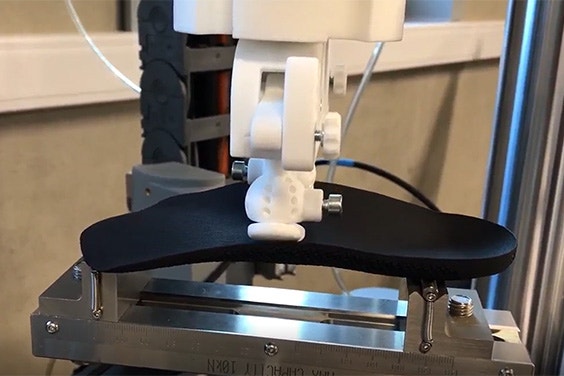
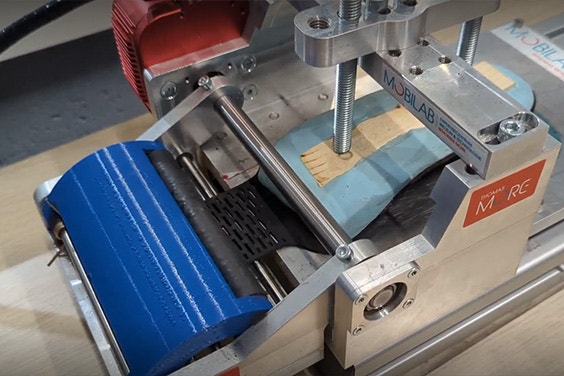
Collaboration for innovation
Understandably, these mechanical tests are both time-consuming and costly. By introducing computer simulations and finite element analysis (FEA) to the design optimization workflow, we can drastically speed up our process. Instead of relying on lengthy mechanical tests, we perform targeted design optimization based on the results of our in-silico simulations.
Notably, speed isn't the only benefit of following this approach. In-silico simulations show both the visual deformation of the insole and deeper insights into what happens to it during deformation, helping us identify the areas most prone to failure.
In collaboration with KU Leuven and Oriana De Becker of the Biomechanics Research Unit, we are setting up finite element modeling (FEM) workflows that allow us to simulate the effect of design changes on the mechanical behavior of phits. This enables us to progress faster in the design process.
“We aim to integrate modeling into our daily workflow to drive continuous innovation. By leveraging digital simulations and predictive modeling, we can accelerate the development of cutting-edge solutions in biomechanics and motion analysis,” explains Sam Van Rossom, Biomechanical Research Engineer at Materialise Motion.
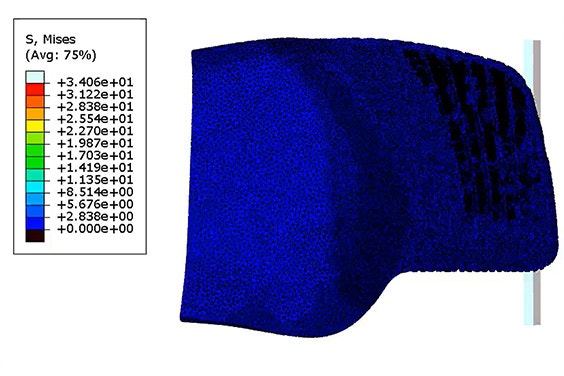
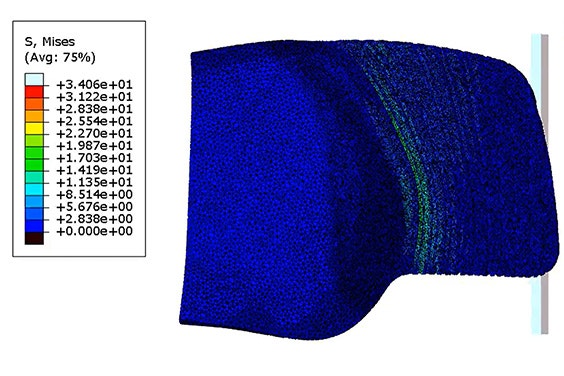
Trusting the simulations
However, before using this data as a basis for any changes to our design, it’s important to prove its validity. That’s where our existing high-cycle mechanical tests come back into play — we can compare the new simulated results with the experimental data we gathered on several designs.
In the EU-funded In Silico World project, we combined advanced computer model simulations with real-life testing to optimize insole design. Using motion capture technology, we analyzed each patient’s gait. Our virtual testing process evaluated multiple insole designs to find the best fit for each individual. To validate our predictions, we produced 3D-printed insoles and tested them with patients, ensuring accuracy and effectiveness in real-world conditions.
By integrating computer modeling with 3D printing, we enhance personalization, performance, and correction. This approach allows us to identify the optimal insole design, leading to better posture, movement, and overall quality of life.
What’s next?
Naturally, this is an ongoing process. We will continue to actively support academic research to expand our evidence base. The strong alignment between our experimental and simulated tests reinforces FEM’s potential as a powerful tool for optimizing insole design. By continuously refining this model and exploring new techniques, we ensure our insoles remain high-quality, durable, and tailored for optimal support and comfort.
A key strength lies in combining digital modeling with mechanical validation, which allows us to verify whether our simulations accurately predict real-world performance. It's the future of insole innovation, and we're one step closer.
Share on:
You might also like
Never miss a story like this. Get curated content delivered straight to your inbox.
